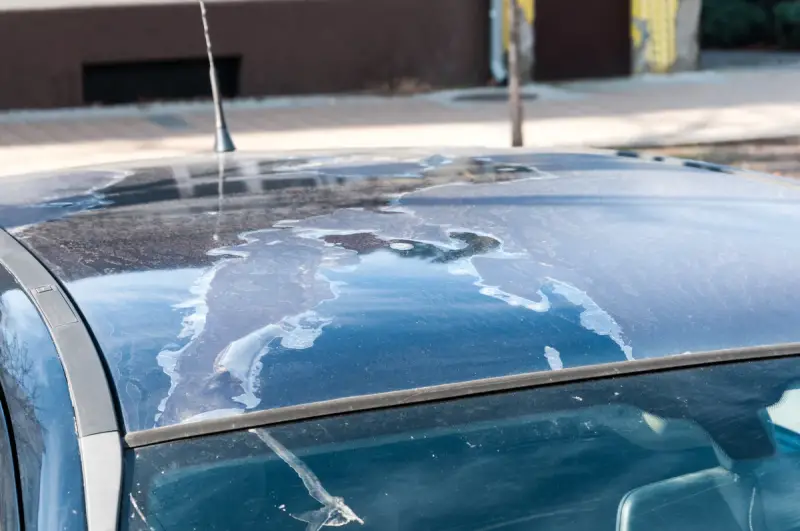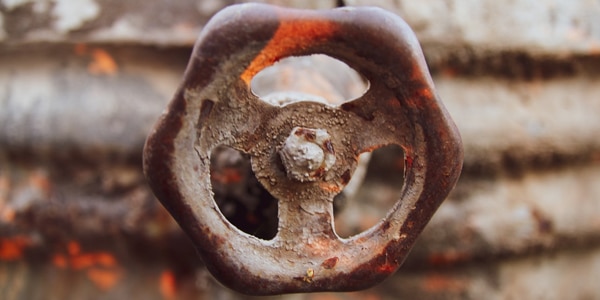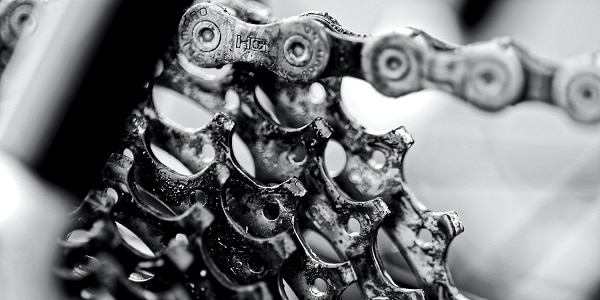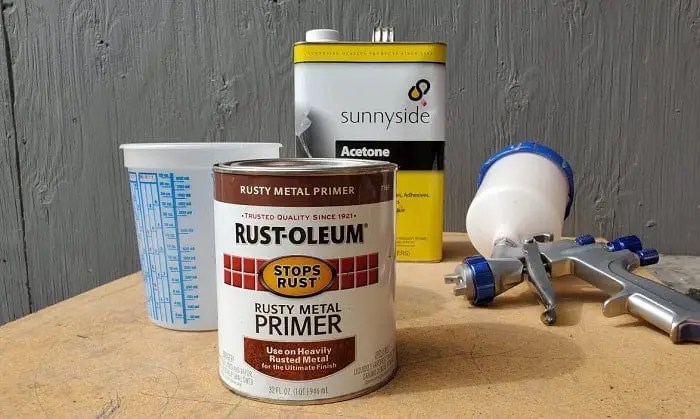Oxidation is a common issue for car owners as it can cause the paint on their vehicles to look dull and faded. Over time, the clear coat on your car’s paint will start to degrade due to exposure to the sun, rain, and other environmental factors. If left untreated, oxidation can lead to permanent damage, affecting the overall appearance of your car. In this post, we will go over the steps to remove oxidation from your car’s paint, restoring it to its former shine and luster.
One of the simplest and most affordable ways to remove oxidation from car paint is by using a polish specifically designed for this purpose. You can find these polishes at most auto parts stores and online. When using a polish, it’s important to follow the manufacturer’s instructions carefully to ensure the best results. Typically, you’ll need to apply the polish to a small section of your car’s paint, using a soft cloth to gently rub it in circular motions. After a few minutes, you can wipe away the excess polish with a clean microfiber cloth.
Another option is to use a specialized oxidation remover, which is a stronger solution that works more effectively to break down the oxidation buildup on your car’s paint. This solution is best used on cars that have severe oxidation, or when a polish alone doesn’t seem to be effective. As with polishes, be sure to follow the instructions carefully when using an oxidation remover to avoid damaging your car’s paint. Additionally, you can use a clay bar to help remove stubborn oxidation and other impurities that can’t be removed by polishing alone.
How To Remove Oxidation From Car Paint Overview
Let’s start with the basics. Oxidation is when the clear coat on your car’s paint starts to break down due to exposure to the elements, like sun, rain, and air. Over time, this can cause the paint to look dull, faded, and even chalky. But don’t worry, removing the oxidation is a breeze!
One of the most popular and effective ways to do this is by using a car polish. There are tons of different polishes out there, but look for one that’s specifically designed for removing oxidation. These polishes contain mild abrasives that will gently break down the oxidation on your paint, leaving it looking shiny and new. I love using a microfiber cloth to apply the polish, as it’s soft and won’t scratch the paint. Simply follow the instructions on the polish, apply it to a small section of your car, and rub it in using a circular motion. Wipe away any excess with a clean microfiber cloth and repeat on the rest of the car.
Another option is to use an oxidation remover. This is a stronger solution that’s great for more severe cases of oxidation. Make sure to follow the instructions carefully, as using too much or leaving it on for too long can damage the paint. I’ve used this method before and was blown away by the results!
Finally, you can also use a clay bar to help remove the oxidation and other impurities that can’t be removed by polishing alone. This is a great step to do before polishing, as it will give you an even smoother surface to work with.
How To Remove Oxidation From Car Paint – Methods in Comparison
| Method | Ingredient | Advantages | Disadvantages |
|---|---|---|---|
| Polishing | Car Polish | Easy to use, inexpensive, gentle on paint | Results may not be as dramatic as other methods |
| Oxidation Remover | Strong Solution | Effective on severe oxidation | Can be harsh on paint if not used correctly |
| Wet Sanding | Wet/Dry Sandpaper | Most effective method, removes deep scratches | Time-consuming, requires skill and experience, can damage paint if not done correctly |
| Compound | Heavy Abrasive Solution | Fast, effective on severe oxidation | Can be harsh on paint, requires skill and experience |
- Polishing: This is a gentle method for removing oxidation using a car polish. The polish contains mild abrasives that will break down the oxidation on your paint, leaving it looking shiny and new. This method is easy to use and inexpensive, making it a popular choice for car owners.
- Oxidation Remover: This is a stronger solution that’s great for more severe cases of oxidation. It contains a heavier abrasive that will effectively break down the oxidation buildup on your paint. Make sure to follow the instructions carefully, as using too much or leaving it on for too long can damage the paint.
- Wet Sanding: This is the most effective method for removing oxidation, as well as deep scratches and other imperfections. It involves using wet/dry sandpaper and wet sanding the paint in a circular motion. This method requires skill and experience, as well as time, and can damage the paint if not done correctly.
- Compound: This method involves using a heavy abrasive solution that’s designed to quickly remove severe oxidation and other imperfections. It’s a fast and effective method, but can be harsh on paint and requires skill and experience to use correctly.

Equipment for Removing Oxidation From Car Paint
| Equipment | Purpose |
|---|---|
| Car Polish or Oxidation Remover | The product used to remove the oxidation from the paint |
| Microfiber Cloths | Used to apply and remove the product, helps prevent scratching |
| Clay Bar | Helps remove impurities and prepares the paint for polishing |
| Wet/Dry Sandpaper | Used for wet sanding method to remove deep oxidation |
| Bucket of Water | Used for wet sanding method to keep sandpaper wet |
| Spray Bottle | Used for wet sanding method to apply water to sandpaper |
| Foam Applicator Pads | Can be used instead of microfiber cloths for applying products |
Step By Step Instruction On How To Remove Oxidation From Car Paint
- Clean the surface: Start by washing your car thoroughly and drying it completely. This will help you see the extent of the oxidation and will prepare the surface for the next step.
- Prepare the surface: If you’re using a clay bar, now is the time to use it. The clay bar will help remove impurities and will prepare the paint for polishing. Simply apply the clay bar to the surface, using a clay lubricant, and work it in a circular motion until the surface feels smooth.
- Choose your method: Decide which method you’ll use to remove the oxidation – polishing, oxidation remover, wet sanding or compound. If you’re using a car polish or oxidation remover, skip to step 5. If you’re using wet sanding, skip to step 7. If you’re using a compound, skip to step 8.
- Apply car polish or oxidation remover: If you’re using a car polish, apply it to a microfiber cloth and work it into the paint in a circular motion. If you’re using an oxidation remover, follow the instructions carefully and apply it to a foam applicator pad or microfiber cloth. Work it into the paint in a circular motion.
- Allow the product to dry: Allow the product to dry for the recommended amount of time, as indicated on the label.
- Wipe off the product: Once the product has dried, use a clean microfiber cloth to wipe it off, working in a circular motion. If the oxidation is still present, repeat the process until it has been removed.
- Wet sanding: If you’re using wet sanding, fill a bucket with water and soak your sandpaper in it. Spray the paint with water, then use the sandpaper to work the paint in a circular motion. Keep the sandpaper and paint wet at all times. Make sure to use the correct grit sandpaper for the job.
- Compound: If you’re using a compound, follow the instructions carefully and apply it to a foam applicator pad or microfiber cloth. Work it into the paint in a circular motion, making sure to use the correct amount of pressure. Allow the product to dry, then wipe it off with a clean microfiber cloth.
- Final step: After removing the oxidation, give your car a final wash and dry, then apply a wax or sealant to protect the paint and keep it looking its best.
Note: When working on your car’s paint, be careful not to apply too much pressure, as this can cause damage. Work slowly and be patient – the results will be worth it!

F.A.Q.
What is car paint oxidation and why does it happen?
Car paint oxidation is a process where the paint on a car becomes dull, chalky and discolored due to exposure to sunlight, pollutants, and other environmental factors. Over time, the paint loses its luster and becomes more susceptible to damage.
What are the signs of car paint oxidation?
The signs of car paint oxidation include a dull, chalky appearance, discoloration, and a rough texture. Oxidized paint can also be more prone to scratching and can be more difficult to clean.
Can I remove car paint oxidation at home or do I need to take it to a professional?
You can remove car paint oxidation at home with the right tools and products. However, if the oxidation is severe, it may be best to take it to a professional who has the experience and tools to do the job effectively and safely.
What equipment do I need to remove car paint oxidation?
The equipment you’ll need to remove car paint oxidation includes a car polish or oxidation remover, microfiber cloths, a clay bar, wet/dry sandpaper, a bucket of water, a spray bottle, and foam applicator pads.
What is the best method for removing car paint oxidation?
The best method for removing car paint oxidation will depend on the severity of the oxidation and the type of paint. Some of the most effective methods include using a car polish or oxidation remover, wet sanding, and using a compound.
Can removing car paint oxidation damage my car?
If you’re careful and follow the instructions carefully, removing car paint oxidation should not damage your car. However, if you apply too much pressure or use the wrong products or methods, you can cause damage to your car’s paint.
Can I use regular car wax to remove car paint oxidation?
No, regular car wax is not designed to remove car paint oxidation. You’ll need a specialized product, such as a car polish or oxidation remover, to effectively remove oxidation from your car’s paint.
How long does it take to remove car paint oxidation?
The time it takes to remove car paint oxidation will depend on the severity of the oxidation and the method you choose. For mild oxidation, you can expect to spend several hours removing it, while severe oxidation may take several days.



Leave a Reply